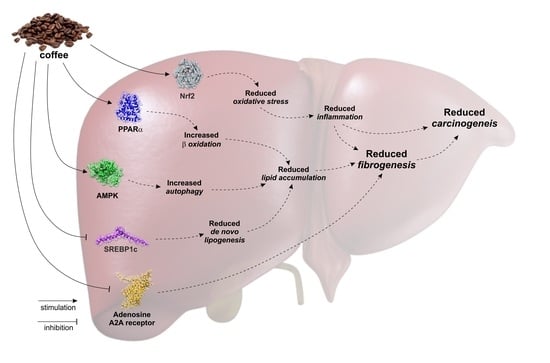Molecular Bases Underlying the Hepatoprotective Effects of Coffee
Abstract
Share and Cite
Salomone, F.; Galvano, F.; Li Volti, G. Molecular Bases Underlying the Hepatoprotective Effects of Coffee. Nutrients 2017, 9, 85. https://doi.org/10.3390/nu9010085
Salomone F, Galvano F, Li Volti G. Molecular Bases Underlying the Hepatoprotective Effects of Coffee. Nutrients. 2017; 9(1):85. https://doi.org/10.3390/nu9010085
Chicago/Turabian StyleSalomone, Federico, Fabio Galvano, and Giovanni Li Volti. 2017. "Molecular Bases Underlying the Hepatoprotective Effects of Coffee" Nutrients 9, no. 1: 85. https://doi.org/10.3390/nu9010085
APA StyleSalomone, F., Galvano, F., & Li Volti, G. (2017). Molecular Bases Underlying the Hepatoprotective Effects of Coffee. Nutrients, 9(1), 85. https://doi.org/10.3390/nu9010085







